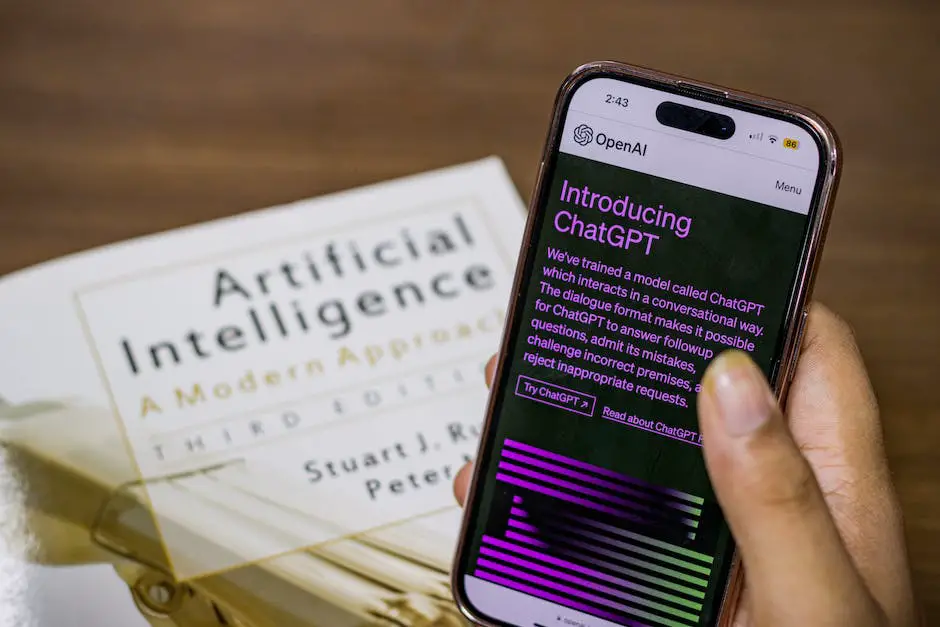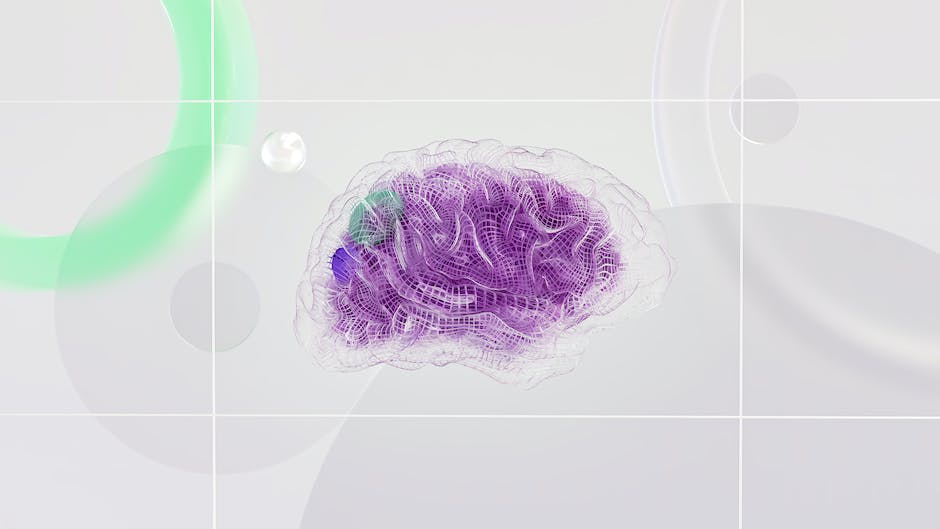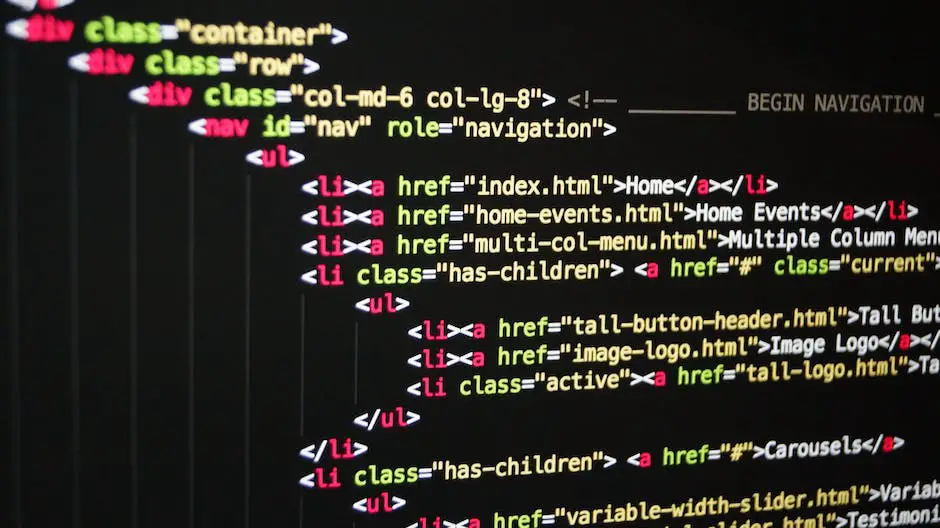In the dynamic landscape of the digital world, the advent of Artificial Intelligence (AI) has paved the way for revolutionary changes in many sectors, including web design. AI, characterized by its unique ability to imitate human intelligence, has quickly become an integral component of web development, opening up new possibilities and transforming the way we design and interact with websites. This exploration delves into understanding AI’s role in web design, illustrating its practical usage, investigating its impact on the profession and projecting its potential future in the industry.
Understanding Artificial Intelligence in Web Design
Understanding Artificial Intelligence in Web Design
Artificial Intelligence (AI) is a rapidly expanding field of computer science that uses machine learning algorithms to simulate human intelligence. In the realm of web design, AI is the driving force behind a multitude of innovations designed to streamline processes and enhance the user experience. The increasing role of AI in web design is apparent through innovations like chatbots, AI web builders, and personalized web experiences.
Increasing Role of AI in Web Design
The shift toward the integration of AI in web design is emerging as a significant trend in the web development sector. AI technologies are used in several areas of web design, with the most notable being automation of mundane tasks, data analysis and interpretation, and creating user-centric web designs. Tools such as Wix’s AI interface, Adobe Sensei, and The Grid all utilize AI to simplify and improve website design and user engagement.
Advantages of AI in Web Design
AI brings a multitude of advantages to the table when integrated into web design. It simplifies the web development process and removes many of the technical barriers previously associated with creating a website. Additionally, AI enhances the user experience by delivering personalized content based on individual preferences and browsing patterns. The utilization of AI in website creation and design also enables developers to learn more about their audience through machine learning algorithms. As a result, companies can make data-driven decisions to enhance their website’s performance and improve the overall user experience.
Data analysis and interpretation is another area where AI shines. By analyzing user behavior and interaction patterns, AI tools can provide insights into user engagement, traffic patterns, and bounce rates. This data helps to create more effective web designs, which can increase user engagement and conversions.
Limitations of AI in Web Design
Despite its many advantages, AI in web design also has potential limitations. The use of AI requires considerable resource allocation, as it involves complex machine learning algorithms and advanced technology. This may not be feasible for smaller companies or startups with limited resources.
Additionally, while AI is incredibly efficient, it lacks the creative capacity and emotional intelligence of a human designer. The human touch is often necessary to execute specific aspects of design, such as branding and storytelling, that require deep understanding and emotional resonance.
Finally, the reliance on data might sometimes affect user privacy. In a world where data breaches and privacy concerns are ever-increasing, using AI tools that gather and analyze large amounts of user data could potentially put user privacy at risk.
The Promising Potential of AI in Web Design
Despite current limitations, the potential for AI to revolutionize web design cannot be underestimated. As this technology evolves, it will continue to offer significant benefits. Yet, the challenge lies in integrating AI’s power and efficiency while preserving the human creativity that makes web design engaging and dynamic.

Illustrating AI usage
Transforming Web Design with AI-Powered Website Builders
The use of AI has significantly transformed the complexity associated with web design, introducing user-friendly automated website builders. Instead of labor-intensive manual coding or restrictive templates, designers can now utilize AI-driven tools like Wix ADI (Artificial Design Intelligence) and Bookmark. These advanced platforms generate unique website designs from user-inputted data, which may include the type of business, the desired aesthetic, and required features. Furthermore, these automated builders provide customization options, enabling users to modify the AI-created design to their liking. This innovation has made web design more inclusive, allowing non-developers to craft impressive websites.
AI-driven UI/UX Design
User Interface and User Experience (UI/UX) design is another domain in which AI proves effective. AI and Machine Learning algorithms are used to analyze user behavior patterns and interactions with a website. Data gathered includes time spent on the site, pages viewed, location, bounce rates, and clicks. AI-driven tools like Adobe Sensei can use these insights to refine and optimize the UI and UX design elements, personalized content suggestions, and also test different design approaches. The goal is to improve website navigability, accessibility, and user-satisfaction.
Content Creation through AI
AI has a substantial impact on web content creation. Tools like Articoolo and WordAI use AI to generate content that matches human writing. AI-based content tools use complex algorithms to understand the context and semantics of the requested topic, and then generate original content based on that understanding. Another AI tool, Grammarly, assists in content editing by identifying and correcting grammar and syntax errors, enhancing the readability and clarity of web content.
Additionally, AI-driven platforms like Phrasee generate marketing language that resonates with the target audience, effectively increasing email open rates and click-through rates. Transforming content creation by maximizing efficiency, AI allows businesses to focus on other critical areas of their operations.
AI in Responsive Web Design and Bleeding Edges
AI can adapt web design to different devices and screens, also known as responsive web design. Grid, an AI-powered web design program, can create responsive and attractive designs, increasing user engagement. Furthermore, AI applies the concept of ‘bleeding edges’ in web design – a design approach where elements extend beyond the viewport. Such designs are challenging to implement manually, but AI algorithms handle them efficiently.
AI in A/B Testing
A/B testing or split testing is a comparison tool in web design to analyze two or more web page versions. AI systems like Sentient Ascend use evolutionary algorithms for this purpose, incorporating user feedback in real-time to optimize website layouts, images, and copy. Instead of only testing two versions, AI can test multiple designs and decide the most effective one with a data-driven approach.
In a nutshell, the deployment of Artificial Intelligence (AI) in web designing simplifies the entire process, from the genesis of the concept to its consistent improvements. It serves the dual purpose of amplifying the efficiency of web designs and customizing them based on individual user preferences, ultimately enhancing overall user engagement and satisfaction.

Impact of AI on Web Design Profession
Transforming Web Design with AI
The rise of Artificial Intelligence (AI) promises a radical shift in the dynamics of the web design industry. An uptick in the sophistication of AI tools has empowered them to tackle a wider bracket of complex responsibilities traditionally entrusted upon humans, such as instant prototyping, coding, user-tests, and refining the aesthetics of website interfaces. As AI further matures, it is predicted to automate a substantial portion of the web design process, potentially spelling a significant change in job roles within the industry.
Participation of AI in Coding and Design
One of the most transformative impacts of AI on web design is in the area of coding. Several AI tools can automatically generate HTML or CSS code from a sketch or a wireframe, vastly accelerating the development process. Similarly, AI can offer design suggestions, create color schemes, and predict design trends based on data analysis. These capabilities make the design process more efficient and less prone to human error.
Role of Web Designers in the AI Era
While AI prowess is growing, it cannot eclipse the creative flair and strategic thinking of humans, at least not in the near future. A web designer’s job is evolving and becoming more complex. Instead of focusing on technical aspects like coding, web designers are increasingly required to enhance their skills in areas such as user experience design, strategy, and content. Web designers need to understand how to work alongside AI tools and leverage them to create more user-centric, inclusive, and adaptive web experiences.
Job Displacement and New Opportunities
The increased automation might cause job displacement in the web design sector, as certain routine tasks get automated. However, it could also open up new opportunities for web designers. As the role of AI becomes more prominent, there will be a growing demand for AI specialists who can train, manage, and refine these AI systems. Web designers might also shift towards more strategic roles, including user experience and interaction design, digital strategy, accessibility design, and more.
Skills Required in Light of AI in Web Design
The shift towards AI in web design will necessitate an upgrade in the skills. Web designers might need to learn how to interpret data insights, personalize user experiences, and manage AI-powered design tools. Additionally, they may need to understand disparate areas like behavioral psychology, accessibility standards, and information architecture.
Ethical Concerns and Regulatory Aspects
As with any significant technological change, the integration of AI into web design also raises a handful of ethical and regulatory considerations. Web designers, business leaders, and regulators will need to consider privacy issues, data governance, information security, and access to technology. As AI continues to reshape web design, web designers will also have to consider how to use AI in a way that respects user privacy and builds trustworthy digital experiences.
To summarize, the advent of AI in the world of web design brings both opportunities and challenges that are transforming the profession. However, AI does not eliminate the necessity of human involvement. In fact, it broadens the role of the web designers making them more strategic and diverse.

Future of AI in Web Design
The Current Intersection of AI and Web Design
The influence of artificial intelligence (AI) has permeated into various facets of web design and development. Utilizing machine learning and predictive analytics, AI provides designers with improved insights into user preferences and behaviors. This technology is even capable of automating the formulation of website layouts, guaranteeing an optimized balance of user-centric design and engaging aesthetics. AI further enhances the potential for website personalization; it aids businesses in crafting bespoke user experiences, leveraged from individual tastes and historical data.
Artificial Intelligence Design Tools
AI-powered design tools are set to become more prevalent. Tools like Adobe Sensei, Firedrop, Wix ADI, and Grid utilize AI to enable designers to build websites effectively and quickly. These tools leverage customer data and apply machine learning algorithms to generate design schemes, suggesting layouts, themes, fonts, and colors that appeal to the target audience. They are poised to revolutionize how user interfaces are built, taking much of the guesswork out of the process.
AI and User Experience
AI technologies are also expected to significantly enhance user experiences on websites. Chatbots and virtual assistants, for example, engage users in interactive, personalized dialogues, guiding them through product selections or providing customer support. Moreover, AI can deliver dynamic content based on a user’s interactions, location, and preferences, resulting in a more relevant and engaging user experience.
Data-Driven Design Through AI
In the future, AI in web design will provide designers with actionable insights through data analysis. AI can analyze large volumes of data quickly and accurately, spotting trends, correlations, and patterns that designers can leverage. This shifts web design from a primarily creative process into a more strategic, data-driven one. Also, through enhanced AI analytics, designers can continually adapt and optimize websites to deliver targeted and personalized experiences.
Predictive AI in Web Design
Predictive AI is one of the future trends to watch. Using this technology, websites can predict and automatically adapt to a user’s needs and preferences based on their behavior. User experiences can be tailored even before a user realizes what they need or want. This foresight can also extend to detecting potential issues and correcting them proactively, ensuring continuous and seamless user experiences.
Growing Autonomy in Web Design
AI will continue to allow for more autonomy in web design. As AI technologies improve, websites may become largely self-designing, self-updating, and self-optimizing. AI may be able to generate new designs, test them, implement changes, and evaluate their success independently. This automation will allow designers to focus on more complex, creative tasks, while the AI handles the more routine, labor-intensive work.
AI and Accessibility
AI is also poised to make web design more accessible. It can help build websites that are universally accessible, automatically adapting design elements to suit users with different needs. In addition, AI tools can make the design process itself more accessible to non-professionals, allowing individuals and small businesses to create their own professional-quality websites.
Ethical Considerations
While the future of AI in web design holds many opportunities, it also presents challenges. Ethical considerations, such as privacy and security, need to be addressed. As AI-powered design tools become more autonomous, maintaining the unique, human touch in design will also be crucial. Nevertheless, with AI’s potential to enhance the efficiency, quality, and personalized nature of web design, it is clear that AI will play a significant role in shaping the web design landscape in the future.

The irrefutable power of AI is continually reshaping the web design landscape, prompting an exciting uncertainty about what the future may hold. As AI develops and matures, its capabilities continue to expand, offering fascinating opportunities for creating increasingly sophisticated, intuitive and personalized web experiences. Regardless of potential challenges, the symbiosis between AI and web design will propel us into a new era of innovative digital interactions that will redefine our perception of the internet’s potential. It’s an exciting time to be part of this evolving digital cosmos.
